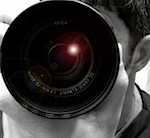
Could this be a technical leap in the ability to take photographs or just a technical fantasy?
“A Mountain View start-up is promising that its camera, due later this year, will bring the biggest change to photography since the transition from film to digital.
Ordinarily, I’m turned off by such hyperbole, but after having seen a demo from Lytro, that statement seems downright reasonable.The breakthrough is a different type of sensor that captures what are known as light fields, basically all the light that is moving in all directions in the view of the camera. That offers several advantages over traditional photography, the most revolutionary of which is that photos no longer need to be focused before they are taken.
That means that capturing that perfect shot of your fast-moving pet or squirming child could soon get a whole lot easier. Instead of having to manually focus or wait for autofocus to kick in and hopefully center on the right thing, pictures can be taken immediately and in rapid succession. Once the picture is on a computer or phone, the focus can be adjusted to center on any object in the image, also allowing for cool artsy shots where one shifts between a blurry foreground and sharp background and vice versa.”
There are some demo photos at the link above as well as a video in which a representative of Lytro states they plan on bringing a competitively priced consumer P&S to market.
Bringing a competitive product to market is extremely difficult, especially for a start-up company, so I’m wondering if they are looking to be bought out by one of the major cameras manufactures — which may just happen if their technology is real. I’m also wondering about photo resolution and if this technology has legs beyond technical demonstrations and perhaps the P&S field.
Any opinions?
Discover more from Meandering Passage
Subscribe to get the latest posts sent to your email.

Sounds very promising. I’m more impressed that you’ve seen a demo of the process. It sounds too good to be true. On the other hand, our current digital approach goes way back and probably could use some quantum leaps.
Don, The post link above has a link to an on-line demo of the system that allow readers to try out this variable focus technology on their own. Very interesting and I’d recommend you trying it out if you’ve not already.
Sounds fascinating. I would certainly want to try out this new technology. It could be a very creative tool!
Ken, Focus has always been one of the things you could do nothing about after the fact. It seems with this new technology you may be able to change the focal point as you process the files. Pretty amazing promise but will the actual product live up to the hype?
It does sound interesting. Some pretty big claims of how revolutionary it will be. I think I remember reading the same thing about how Foveon sensors were going to be commonplace everywhere. I can see something helping in those “oops” moments, but would hate to think that the photographer never needs to focus the camera anymore to communicate what they are trying to capture.
Mark, Yeah that’s why I’m wondering if these great claims aren’t part of a PR ploy to try and sell their company to a high bidder. I always keep in the back of my mind…”Follow the money” — especially in this age when greed seems to rein supreme. :-)
Selective focus would still be available as an artistic method of expression…but supposedly you could change/adjust the focal point after the fact.
In one light it all seems very good for photographers if it is real. However, if you take a second look, making the capture of good photographs easier and easier to do, has not been particularly good for serious photographers or their careers.
David, Yes, I agree, any technical advancement which removes or lowers requirements for particular skills, knowledge or abilities in photography is not good news for “serious/professional photographers.” I believe those photographers must find specialized areas for their expertise as the layman photographer, through more opportunities and technology, is producing better and better photos. You can already see this beginning to happening.
Another seismic shift in photography is about to occur. Exciting stuff. I didn’t run across this on my own for several days. By then, it was old news to me, thanks to Earl, crack reporter.
Anita, well see if the hype is worthy of the results on this one. The technology looks interesting but will it be practical and what will the trade-offs be…there’s always trade-offs. :-)